2023
15
January
What is the best way to exchange money or pay for things in a different currency?
15
January
When you travel, you have many different options when it comes to exchanging money or paying for things in a different currency.
While there are many options, I can guarantee you one thing, any time you exchange money or pay for things in a different currency, *someone* is taking a minimum of 3% of every transaction from you as a foreign exchange fee.
They are taking this fee in at least one of two ways:
* an obvious fee that they tell you about upfront
and / or
* a hidden fee, by using an inflated exchange rate that is worse than today's 'real' exchange rate
Inflated exchange rates - the hidden fee
A lot of people aren't aware of the hidden fee. For example, if today's 'real' exchange rate between Canadian and U.S. dollars is 1.30, they are charging you an inflated rate of 1.34 - and pocketing the 3% difference as a fee for themselves.
Unless you actually look at your receipt or credit card statement, and compare the exchange rate they used, against the 'real' exchange rate from a currency exchange site (like XE.com) - you will have no idea about this hidden fee.
And by *they* I mean every bank, currency exchange center, ATM machine, and credit card in the world. They all want their 3% fee from you.
Ways you can exchange money - from worst to best
| Method | Obvious Fee | Inflated Exchange Rate |
| Airport exchange kiosk |   |
  |
| Your bank at home |  |
  |
| Good independent currency exchange place at home |  |
 |
| ATM in a different country |  |
 |
| Prepaid cards (most of them) |  |
 |
| Credit cards (most of them) |  |
|
| 'Zero foreign exchange fee' credit cards (rare) |
NONE | NOPE |
| 'Zero foreign exchange fee' prepaid cards (rare) |
NONE | NOPE |
Yes, there are ways to avoid both the obvious fees *and* the hidden fees (inflated exchange rates)
When paying for something in a different currency, the two best types of products for avoiding fees are:
1. 'Zero foreign exchange fee' credit cards
2. 'Zero foreign exchange fee' prepaid cards
They're both useful in different ways, depending on your goal.
Credit cards are useful for purchasing things from stores or restaurants in other countries while avoiding foreign exchange fees and earning cash back or rewards at the same time.
Prepaid cards are useful for purchasing things from stores or restaurants in other countries and avoiding foreign exchange fees while withdrawing cash from the ATM.
• If you only care to see a list of my current recommendations for both types of products, click here to jump to the bottom of this article.
• If you would like a little more detail as to why they are my current recommendations for avoiding currency exchange fees, read on.
Free Credit Cards With Zero Foreign Transaction Fees
When your goals are:
• To purchase things in a foreign currency from stores, restaurants, and websites in other countries that accept credit cards and pay absolutely zero foreign transaction fees.
• To potentially earn cash back on top of the 3% you're already saving in foreign transaction fees.
Most of the free 'zero foreign transaction fee' credit cards have become worse over the past year or two.
The best free option right now is the Brim Financial Mastercard....
1. Brim Mastercard
Pros:
• Zero foreign transaction fees.
• Can earn points (1 point for every $1 spent).
• Can redeem points at any time and in any amount.
• Free Boingo wi-fi access.
Cons:
• Being a Mastercard, it won't work at U.S. Costco's.
• Seems to easily trigger fraud alerts while using it abroad. It's a good idea to have a backup card.
The other two free options are tied for second place...
2. Home Trust Preferred Visa
Pros:
• Zero foreign transaction fees.
• Being a Visa, it's useful as a backup to the Brim Mastercard.
Cons:
• No cash back on foreign exchange purchases (1% back on Canadian purchases).
• Your accumulated cash back credits only once a year.
• Its days might be numbered due to Smith Financial Corporation acquiring Home Capital Group.
2. Rogers World Elite Mastercard
Pros:
• 3% cash back rewards on purchases made in U.S. dollars, which compensates for the foreign exchange fee.
• 1.5% cash back rewards on purchases made in Canadian dollars.
• Actually has some decent insurance included, unlike the Brim or Home Trust cards.
Cons:
• Only useful for purchases made in U.S. Dollars.
• Has a minimum income requirement of $80,000 annual (personal) $150,000 (household).
The Rogers website *says* to maintain eligibility for this card, you must have an annual spend of $15,000 each year. As of yet, there have been no reports of this being enforced.
If the majority of your foreign currency purchases are in U.S. dollars the Rogers World Elite is a good free card to consider. For purchases in other currencies it is not useful.
Credit Cards With Zero Foreign Transaction Fees
(But Have An Annual Fee)
For credit cards with an annual fee it comes down to whether or not you actually value what they include for insurance, perks, etc, that free credit cards rarely include. Your personal spending habits are also an important factor (which determines your rewards).
There's no right answer for everyone. The first two cards listed here are the ones most Canadians debate over unless you're able to spend a decent amount using American Express.
1. HSBC World Elite Mastercard
• $149 annual fee (first year free)
• Zero foreign transaction fees
• Good choice for those who spend a lot on travel (3% back in travel rewards)
Insurance:
travel medical, bag delay, bag loss, trip cancellation, trip delay, rental car
Perks:
Boingo wi-fi, $100 travel credit, DragonPass lounge membership (but not lounge passes)
Cons:
• Being a Mastercard, it won't work at U.S. Costcos
• Its days might be numbered due to potential acquisition from RBC (but very early to speculate, the acquisition hasn't even been approved yet)
2. Scotiabank Passport Visa Infinite
• $150 annual fee (first year free)
• No foreign transaction fees
• Good choice for those who value lounge passes
Insurance:
travel medical, bag delay, bag loss, bag theft, hotel burglarly, trip cancellation, trip delay, rental car
Perks:
Visa lounge membership, 6 Plaza Premium lounge passes
3. Scotiabank Gold American Express
• $120 annual fee (first year free)
• No foreign transaction fees
Insurance:
travel medical, bag delay, bag loss, bag theft, hotel burglarly, trip cancellation, trip delay, rental car
Cons:
• American Express is not widely accepted outside North America
jump to: Summary Credit Cards Prepaid Cards Top
Prepaid Cards With Zero Foreign Transaction Fees
When your goals are:
• To purchase things in a foreign currency from stores, restaurants, and websites in other countries that accept credit cards and pay absolutely zero foreign transaction fees.
• To potentially earn cash back on top of the 3% you're already saving in foreign transaction fees.
• To withdraw cash from an ATM machine in another country and pay the lowest transaction fees possible.
You typically load prepaid cards using funds from your bank account.
There are a handful of prepaid cards that are useful for purchasing things or withdrawing cash from an ATM in another country and avoiding fees while doing so.
With virtually all other prepaid cards, a 3% currency conversion fee is taken from you at some point. It could be when you use the card, or when you load it with funds. It's usually a hidden fee (built into the exchange rate) so most people are unaware.
1. Wise Prepaid Visa
Wise has been around since 2011 (they used to be known as TransferWise). The important thing to know about Wise is that from the very beginning their goal was to offer lower transaction fees than the traditional banks with everything they do.
Whether it's exchanging currency, loading funds in a different currency, or buying things in a different currency, their goal is to offer very low fees and be transparent about what those fees are.
For many travellers the Wise card is a great choice for buying things while abroad, or withdrawing reasonable amounts from ATMs in other countries.
From an ATM...
...if you withdraw $350 or less in a month there are zero foreign transaction fees.
... if you withdraw more than $350 in a month, you pay a 1.75% foreign transaction fee on the amount over $300. (Which is still pretty decent compared to the 3-3.5% fee that virtually every bank or prepaid card will charge you).
...if you make more than 2 withdrawals in a month, you pay $1.50 for each additional withdrawal.
Pros:
* The only prepaid card on the Canadian market that reliably supports 3-D Secure (3DS), which is an extra layer of security for transactions.
Cons:
* If you're going to be withdrawing higher amounts from ATMs (or more frequently) you may want to look into the Wealthsimple Prepaid Mastercard below.
2. Wealthsimple Prepaid Mastercard
Pros:
* 1% interest on your balance
* 1% cashback, crypto, or stock (your choice)
* 0% foreign transaction fees
* $0 ATM withdrawals both within and outside of Canada
* Higher ATM withdrawal limits ($500 per transaction, $1k daily, 3 transactions per day)
Cons:
* Being a Mastercard, it won't work at U.S. Costcos
* The reason Wealthsimple can offer this free card with such attractive features is that they hope you'll be convinced to also use their other investment services. It's essentially a loss leader product for them. As a result the signup process can feel a little more invasive than other prepaid cards, such as asking for your SIN.
jump to: Summary Credit Cards Prepaid Cards Top
3. EQ Bank Prepaid Mastercard
Pros:
* 2.5% interest on your balance
* 0.5% cash back
* 0% foreign transaction fees
Cons:
* Being a Mastercard, it won't work at U.S. Costcos
The EQ Bank Prepaid Mastercard is the new kid on the block. It's meant to compete with the WealthSimple Prepaid Mastercard.
They both help you avoid the typical 2.5% foreign transaction fee when buying something or withdrawing from an ATM in another country.
The main difference is that EQ Bank gives you a higher interest rate on your balance (2.5% versus 1% with WealthSimple), but slightly less cash back (0.5% versus 1% with WealthSimple).
jump to: Summary Credit Cards Prepaid Cards Top
Summary Of The Best Zero Foreign Transaction Fee Products To Use - Depending On Your Goal
| Goal | Best Product To Use | Best Choices | ||
| Purchase things from stores or restaurants where credit cards are accepted *and* earn cash back or rewards. | Zero Foreign Transaction Fee Credit Card | Free Brim Mastercard Home Trust Preferred Visa Rogers World Elite Mastercard Annual Fee HSBC World Elite Mastercard Scotiabank Passport Visa Infinite Scotiabank Gold American Express | ||
| Goal | Best Product To Use | Best Choices | ||
| Purchase things from stores or restaurants where credit cards are accepted. | Zero Foreign Transaction Fee Prepaid Card | Wise Prepaid Visa Wealthsimple Prepaid Mastercard EQ Bank Prepaid Mastercard | ||
| Goal | Best Product To Use | Best Choices | ||
| Withdraw cash from an ATM machine in another country and pay the lowest transaction fees possible. | Zero Foreign Transaction Fee Prepaid Card | Wise Prepaid Visa Wealthsimple Prepaid Mastercard EQ Bank Prepaid Mastercard | ||
jump to: Summary Credit Cards Prepaid Cards Top
Other tips for exchanging money or paying for things while traveling
Are there any major Canadian banks that allow you to avoid paying high fees when making ATM withdrawals in other countries?
All major banks will charge the 3-3.5% hidden fee (inflated exchange rate) but Tangerine / Scotiabank is the one bank that won't charge the additional obvious fee, if you withdraw from an ATM in the Global Alliance.
ATMs in the Global Alliance include: Bank of America (in the U.S.), Scotiabank (in Mexico, Caribbean, Central America or South America), and Deutsche Bank (in Europe).
You can find a complete list of ATMs in the Global Alliance here.
What about withdrawing cash using my credit card?
This is generally a bad idea. Most credit cards consider this a cash advance, and start charging you interest immediately.
Yes, there are sometimes ways around the interest charge, by overpaying your credit card first, but this can still be a bad idea for other reasons, and you'll still be charged a cash advance fee.
TIP: If the machine gives you a choice, choose to be charged in the currency of the country you're in.
When you're in another country, and the debit or credit machine asks if you would like to be charged in your home currency (Canadian dollars) - do *not* select this option.
It may seem like a good idea, but what's really happening when you select that option is that the machine's provider is determining the exchange rate when calculating the amount you will be charged in $CAD.
I guarantee that this will be an even more inflated exchange rate than the one that Visa or Mastercard uses.
What you want to do is select the option to be charged in the currency of the country you're in, and let Visa or Mastercard use their typical 2.5% inflated exchange rate.
Beware: I have heard that with some machines, if you use the tap method to pay, you may not even be asked, and it will automatically charge you in $CAD, with the terrible exchange rate.
Is there a way to avoid foreign exchange fees when sending an international money transfer?
You may want to look into Wise.
They use the real exchange rate, without the hidden 3% markup. There is still an obvious fee (small percentage and fixed fee) but they are transparent about it.
What currency should I use in Mexico?
Pesos are the best currency to use in Mexico. Using $USD means both you and the person you're paying are each losing 3%.
Convert some Canadian dollars to Pesos before you go, or withdraw them from the ATM when you get there.
When using the ATMs in Mexico, choose the legitimate bank ATMs. Not the street ATMs.
Jump to: Summary of the best 'zero foreign exchange fee' products to use
Jump to: The best 'zero foreign exchange fee' credit cards
Jump to: The best 'zero foreign exchange fee' prepaid cards
Jump to: Top of this article
|
|
|
|
People That Liked This Page Also Liked:
|
|
You may also want to check out pages that were tagged with: |
Be The First To Know About The Next Amazing Deal!
Head to the YYC Deals Alerts Page where you can choose to be notified by e-mail, Facebook, Twitter, or RSS Feed the moment an amazing travel deal from Calgary is found.Setting up alerts allows you to be one of the first to see a new deal, before it sells out.
And don't worry, alerts are only sent when it's truly an amazing deal.
Like Our Site? Follow Us!
|
|
Comments from Facebookers
Comments from Everyone Else
19 Responses to "What is the best way to exchange money or pay for things in a different currency?"
Leave a Reply



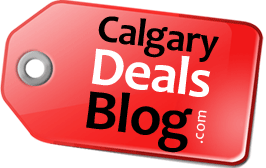
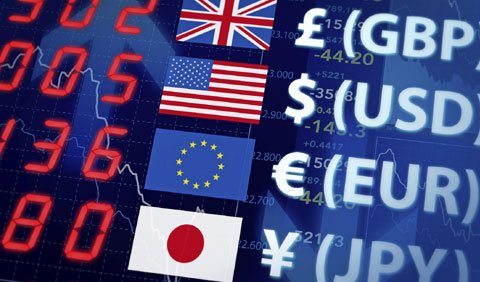
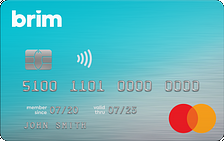

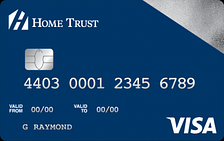
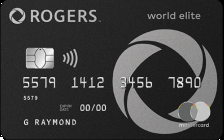
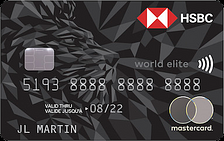
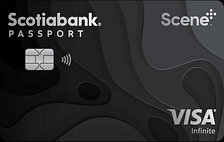
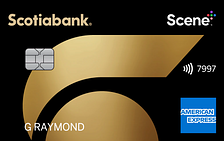
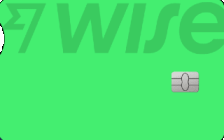
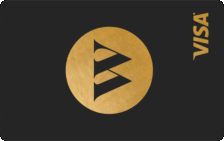
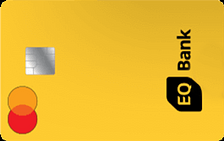



Thanks for this!
Is it better to exchange usd in Canada or exchange when we get to U.S?
WT: No problem!
Asi: I would say that assuming you exchange your money in Canada at a place with the best exchange rates (such as Calforex in Calgary), it's unlikely you'd do much better exchanging it in the U.S.
The story can be different for more exotic currencies, where you might be better off waiting until you get to the destination to exchange.
But for $USD, being so common, the rates here in Canada (at competitive exchange places) are about as good as it gets.
Thanks for this! Not sure how I missed the original post but just ordered the Scotiabank card. Just an FYI that the 25,000 point offer looks like it ends on June 30th, so all applications have to be submitted by then to qualify for the offer. Just in time for our trip to Florida in July!
Great information.
Guess I have more of a ?
I heard going through the Canadian Snowbirds association currency, To have them deposit monies $ to your US account you get a better rate as well. For people whom go to the US for six months out of the year. Have you heard of this?
Thank you for the great post. What's your opinion on getting Japanese Yen? Should I buy it in Calgary or in Japan?
Thanks again
Hi Julia,
I would think Japanese Yen would be common enough that a place like Calforex could offer pretty competitive exchange rates. Not sure about local banks.
When you try the order form on the Calforex website, it shows what they're using as the exchange rate.
When I compared it against today's 'true' exchange rate from XE.com - it seems pretty competitive.
What you can do is see how much, say, 25,000 Yen would cost using XE.com
Let's say the XE.com calculator shows 25,000 Yen equaling 295 Canadian.
I would then multiply 295 by 1.025, and add another $6, for a pretty good idea of the best you can probably hope for, at a good exchange place in either Japan or Canada, or from an ATM withdrawal in Japan.
So in this case, 295 x 1.025 would be $302. And then add $6. So $308 Canadian being the best total price one could realistically achieve to purchase 25,000 yen at today's rates.
You can then call Calforex and ask how much 25,000 Yen would be, and see if it's close to that number. Each branch sets their own rates.
Hi Maria,
I can't say I had heard of the Canadian Snowbird currency exchange program, but I took a look and it seems legitimate. My best guess is that being a not for profit organization, it probably is a bit better rate than the banks usually give.
If you go to this link it shows what their current exchange rates are:
http://www.snowbirds.org/snowbird-currency-exchange-rates
You can compare that against the live rates from XE.com - if you add 0.025 to the live rate, and the Snowbirds are below that number, it's a very competitive rate.
For example, today's live rate on XE.com is 1.31. Adding 0.025 to that, we get 1.33. And the Snowbirds are claiming to offer 1.327.
Thanks for the info and websites, Chris! I used to go to Global Exchange and buy currency when the exchange rates were good, but GE does not exist any more. Doesn't Calforex want a high minimum transaction? In my research I found that AMA offers a not bad price to purchase. I am not a member though so can't use it.
There are a couple of other options available for CAD to USD (and vice versa) conversions that avoid the FX fee.
1) Get a Royal Bank account (CAD)
2) Get a Royal Bank account (USD)
3) Get an account with RBC Bank Georgia (USD) through Royal Bank (note that RBC Bank Georgia is an actual American bank domiciled in the USA)
4) Link these accounts together on your online profile which Royal Bank can help you to do
To exchange from CAD to USD without the FX fee, transfer online from Royal Bank CAD account (obtained in Step 1) to RBC Bank Georgia account (obtained in Step 3). If you want to withdraw this USD in Canada as cash prior to travelling, you can transfer from RBC Bank Georgia to your Royal Bank USD account obtained in Step 2.
* Note that you should not transfer from Royal Bank CAD to the Royal Bank USD account as that will have the FX fee.
To exchange USD to CAD, transfer from RBC Bank Georgia to Royal Bank CAD. Again, do NOT transfer from Royal Bank USD to Royal Bank CAD as that will have the FX fee.
Another way to avoid FX fees is to use "Norbert's Gambit", which is, in essence, using the stock markets to convert currencies. This is handy for larger sums.
I also have the Home Trust preferred card for purchases in currencies that are not CAD or USD and I like the cashback, roadside assistance, and no annual fees.
I use all three of the above techniques to avoid the FX fees like the plague.
Hope you all find these suggestions helpful.
The Cheapest way I've found to change money to the Philippines is to remit it. It costs me $10 for however much I want to send, and I can pick it up when I land. There's a way to remit it to a certain place, but if you have a close Filipino friend or loved one, you can send it to their bank. That's what we do when we travel, as my fiancé is Filipina. Exchange rate is equal (or sometimes better) than XE, and if you're changing $1000 it only equals 1% you're paying.
Tried to use my new Scotia bank Passport when I was in the Philippines and NO ATM will give you any money..called Scotia bank ..they said it should..but it doesn't! Purchases are OK with the card..
Hello Chris,
Can you double check your information on the Rogers cards? It appears they have a few of 2.5% of the transaction amount after conversion to Canadian dollars. Thank you.
**Fee. Not few.
Hi Christina,
The Rogers cards are a little different in that they charge the 2.5% foreign exchange fee, but this fee is more than negated by the 3-4% back that you receive back when making a purchase in a foreign currency.
Another way to think of it is a 0% foreign exchange fee and an additional 0.5% or 1% back.
Thank you for your response Chris. Much appreciated!
One of the frustrating things is that even if you have a US Dollar account at one of the big Cdn. banks, u cannot pull out US$ from an ATM in the USA or anywhere else for that matter.
You have to exchange your USD and deposit into your CDN (online) and then the ATM will convert it back , thereby losing twice.
Victor, have you looked into TD's Cross Border banking?
I think there's two kinds of U.S. dollar accounts..
Type 1) Where you have a USD account but your account is actually with a Canadian bank.
Type 2) Where you have a USD account and your account is.actually with a U.S. bank - but there's some semblance of a relationship to your Canadian account because the bank has a presence on both sides of the border.
Type 2 is what you want.
TD Cross Border Banking is Type 2 and can be a bit of a pain to setup, but once it is, your account on the U.S. side has a U.S. address. And if you withdraw using the ATM in the U.S. there are no exchange fees. When depositing money into your account your funds need to be in $USD to not lose anything to the exchange.
RBC has something similar.
Good Article! A couple of things though. First, Wealthsimple is now paying 4% interest on their prepaid Mastercard account. Second, I have a Tangerine account that I created to avoid ATM fees. I used that Tangerine account at a Scotiabank in Santiago, Chile, and I was charged the typical large ($12 Canadian) local fee for using the ATM. I complained to Tangerine but did not get a good response. I no longer trust the Global ATM Alliance claims they make.